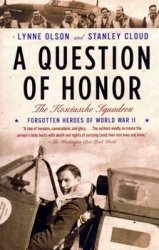Advertising from 1929 to 1945 experienced the challenges of other business enterprises in coping with the Great Depression and in adjusting to the priorities and changed circumstances of the World War II home eront.
Advertising revealed important aspects of American culture as well. Both appealing to and influencing the hopes and fears of the American people, advertising patterns also reflected the emergence of radio as a central component of both the news media and the popular culture. Newspapers remained by far the largest venue for advertising, accounting for close to half of advertising expenditures in the 1930s and for about one-third during the war. Direct mail was second for most of the period. By 1939, however, radio had passed magazines for third place, and then by 1944 overtook direct mailing. (After the war, direct mailing reclaimed second place in advertising dollars and television advertising became a major factor in the 1950s.)
As the economy plummeted in the early 1930s (and advertising expenditures dropped from $3.4 billion in 1929 to just $1.3 billion in 1933), advertisers tried various tactics to stimulate buying. Some pursued a tactic of booster-ism, hoping to increase purchases by raising morale and confidence in the economy; others took a different tack, trying to capitalize on fears of declining economic and social status by pointing out such perils as an unappealing complexion or unstylish clothing; still others simply tried to enhance the allure of their products. Advertisers also turned increasingly to sophisticated market research and to scientific public opinion polls to determine public preferences and how to appeal to them.
The depression brought increased criticism of advertising, consistent with the declining image of business more generally. Some critics suggested that there needed to be truth in advertising regulations similar to the stock market reforms that required full and accurate disclosure. Consumers Research, Inc., was formed to test products and advertising claims, and a splinter group from that organization established the Consumers Union. The Food, Drug, and Cosmetic Act of 1938 gave the Food and Drug Administration additional power over labeling and advertising.
Advertising picked up by the middle of the decade and spending on ads rose to $2.1 billion by 1940, with some of the increase going to marketing the electrical appliances— refrigerators, for example, and washing machines—that continued to transform American homes. (The importance and appeal of such TEcHNoioGY-based consumer goods were reflected in displays at the 1939-40 New York World’s Fair.) The federal government also did its own form of advertising in the 1930s, from the “Blue Eagle” campaign of the National Recovery Administration to publicity for the Social Security Act, to the posters for such agencies as the Works Progress Administration and the Farm Security Administration. Political parties and candidates for office continued election-time advertising as well.
Expenditures on advertising increased further as the economy recovered because of defense mobilization, but the American entry into World War II raised issues for advertisers. Despite the return of prosperity, they worried that there might be little need for advertising when consumer goods were restricted because of war production. Concerned also that the government might take steps to limit advertising for fear that it would contribute to inflation by increasing product costs and consumer demand, advertisers formed the Advertising Council soon after Pearl Harbor to protect the industry.
The Advertising Council worked with the Oeeice oe War Ineormation and other government agencies to support the war effort. Facilitated by the Ad Council, advertising firms donated time and expertise to a sort of domestic propaganda that promoted war bonds, victory gardens, scrap and fat drives, conservation of food and vital materials, and recruitment of men and women for the armed forces and defense industries. Such contributions

To the war effort, which the Ad Council said amounted to some $1 billion in services, paid off in continued visibility, increased prestige, and even tax write-offs.
Product advertising continued as well, and painted an appealing picture of the nation as well as of the goods the ads promoted. Expenditures on advertising rose to $2.9 billion by 1945, and surely would have risen more without the constraints of the war years. Wartime ads depicted American GIs as innocent and decent idealists who would do their duty and win the war, and the home front as a place of hard work, common cause, sacrifice, and old-fashioned values that sustained the GIs and helped speed victory. As the end of the war neared, advertisements portrayed an America rooted in values and patterns of the past but propelled by the free enterprise system into a postwar future of economic abundance and wonderful new consumer goods. As it so often does, advertising both reflected and influenced the culture, for polls showed that most Americans wanted an era in which traditional American ways would continue but the American standard of living would be much better. It was a compelling picture, one that wartime and postwar Americans eagerly pursued.
Further reading: Stephen R. Fox, The Mirror Makers: A History of American Advertising and Its Creators (New York: Morrow, 1984); Roland Marchand, Advertising the American Dream: Making Way for Modernity, 1920-1940 (Berkeley: University of California Press, 1985).




 World History
World History


![The Battle of Britain [History of the Second World War 9]](/uploads/posts/2015-05/1432582012_1425485761_part-9.jpeg)






